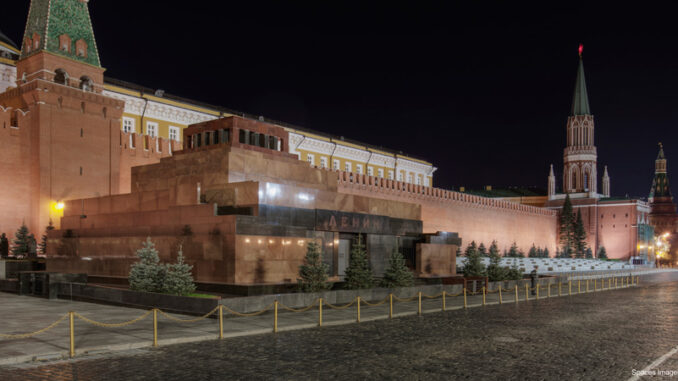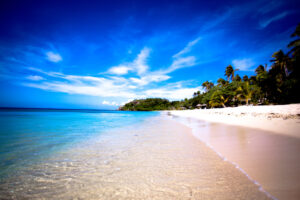
Japanese Emperor Retiring?
In Japan, unlike in the United States, emperors don’t have term limits. In fact, they aren’t allowed to retire . . . ever.
But all of that may be about to change.
Japan’s current leader, Emperor Akihito, is 83 years old. The son of the infamous Emperor Hirohito, who ruled Japan during World War II, Emperor Akihito has ruled for 28 years. Though still extremely popular, he would like to retire in order to give his elder son, Prince Naruhito (57) time to lead. If the bill passes Japan’s Parliament, Akihito will be the first living emperor to leave the throne in 200 years.
Most Japanese citizens support allowing their beloved emperor to retire. However, many conservatives are opposed to the bill because they are afraid of permanently changing Imperial Household Law, which determines succession. They are concerned that changing the law will also make it so that women can lead. Currently, emperors must be male. When an emperor dies, his son becomes emperor. If he doesn’t have a son, the throne passes to a younger brother or nephew. Under the present law, not only can women not become heir, but they must also leave the Imperial family when they marry. The new bill would undo this provision.
The majority of Japanese citizens support allowing women to become heir. But changing Imperial Household Law is not to be taken lightly. Until World War II, the Japanese viewed their emperors as gods. When the war ended, American occupiers drafted a Constitution that took away the emperor’s status as a deity and established him as a symbolic figurehead instead.
Dig Deeper Prince Naruhito, son of Emperor Akihito, has only one child: a daughter. If Naruhito becomes emperor, but the bill to allow women to become heir isn’t changed, who will become emperor after Naruhito if his daughter cannot? Use internet resources to find the answer.
North Korea Tests Two Missiles in a Week
Last week, North Korea grabbed the world’s attention when it announced that it had successfully tested an intermediate-range ballistic missile. On Sunday–a week after that test–it fired another missile.
The missile launched on May 14 was the Hwasong-12. Capable of carrying a heavy nuclear warhead, the Hwasong-12 reached an altitude of 1,312 miles before landing in the ocean 480 miles away. This gave it a longer range than any previously-tested North Korean missile. Experts believe it is possible for this missile to reach American military bases in Guam and other places in the Pacific.
The most recent missile, a Puksukgong-2, launched from Pukchang, North Korea, on May 21. It reached an altitude of 620 miles and flew about 300 miles before splashing down in the ocean. Like the Hwasong-12, it is also capable of carrying heavy nuclear weapons. Experts believe that these tests are helping North Korea come closer to its eventual goal of developing an intercontinental ballistic missile (ICBM) that could potentially reach the U.S. mainland.
Leaders of the U.S., Japan, and South Korea have condemned the missile tests, which North Korea claims it is carrying out in response to aggressive threats from these nations. China, longtime ally of North Korea, has called for North Korea to stop its missile testing, but has also urged the U.S. to remove its aircraft carriers from the area around the Korean Peninsula. The USS Carl Vinson is currently stationed there, and last week the US Navy announced that the USS Ronald Reagan would begin operating there as well.
Dig Deeper Locate North Korea on a map or globe. How far would an ICBM have to travel, if it were launched from the North Korean capital, in order to reach the United States? If North Korea were ever successful at developing such a weapon, what other nations would be threatened?
Russian Investigation Takes a New Turn
In the most recent development in the ongoing story of Russian tampering with the 2016 presidential election, Deputy Attorney General Rod J. Rosenstein last week appointed former FBI director Robert S. Mueller III as special counsel for the Russia investigation.
Here’s what that means: special or independent counsel is a body that can operate independently of the government in order to investigate the government’s actions and possibly prosecute the president and other higher-ups for federal crimes. Mr. Mueller now has the authority to examine any connection the Trump administration (and President Trump himself) may have had with Russia during the campaign. Moreover, Mueller will also be able to investigate whether or not the fact that Trump fired FBI director James Comey last week means that Trump was working to obstruct justice. (Comey was originally heading up the Russia investigation.)
Trump is not the first president in recent history to face an independent or special counsel. The law to create a special counsel first originated with Richard Nixon’s Watergate scandal in the 1970s. Special counsels were used a decade later during Ronald Reagan’s presidency to investigate the Iran-contra affair, and again in the 1990s when Bill Clinton faced charges surrounding the Whitewater scandal and his relationship with a White House intern.
However, Mr. Mueller will not be able to act as independently as his title may suggest. Attorney generals can override the power of special counsel. In other words, Deputy Attorney General Rosenstein has the authority to fire Mueller–and President Trump has the authority to fire Deputy Attorney General Rosenstein.
What Do You Think? Should presidents be immune to criminal investigations, or should they be subject to the same laws (and punishments) as every other citizen? Explain your opinion, remembering to give reasons to support your claim.
Paradise Lost
When you think of Pacific islands, you probably picture a paradise of white sand beaches, palm trees, and blue-green waters. But Henderson Island, located in the South Pacific halfway between New Zealand and South America, is anything but a paradise.

Henderson Island, one of the most remote places on earth, is uninhabited by humans. It’s a British possession that was named a Unesco World Heritage site in 1988 for its rare ecology. However, it also sits at the western side of a major counterclockwise ocean current, called the South Pacific Gyre, which brings trash and debris from the shores of China, Japan, and South America. In fact, garbage from every continent except Antarctica has appeared on Henderson Island’s beaches. Recently, researchers counted more than 37 million pieces of trash on the tiny island, which is only 14 square miles large. Most of it is plastic debris, mainly everyday household items. Many of the items are decades old, thanks to the durability of plastic. This amount of trash means that Henderson Island might have the highest density of plastic debris anywhere in the world.
It is impossible to clean the island completely: researchers estimate that at least 3,750 new pieces of trash wash up onto its shores daily. The best thing we can do is to limit our plastic consumption to save other islands from a similar fate. The amount of plastic debris currently on Henderson Island is the same amount produced by the world every 1.98 seconds.
